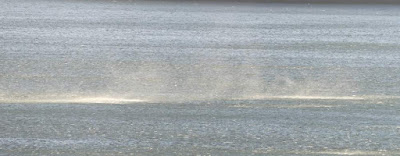Life is about to get a bit frantic for me with Census results coming out tomorrow. So I am a day or two early with the June Report. As usual:
- I will update the report if any exciting sightings come to my notice (that has happened with receipt of a list from Gabo Island adding 4 species to the month list): and
- Very much as usual; after nearly drafting this report I recorded an additional species (Little Grassbird) so have already had to act on point 1!
Overall a good diversity of birds were reported this month, with 131taxa listed across the District. I suspect the list would have been longer had a planned pelagic from Eden into Victorian waters gone ahead: in view of the weather a very sensible decision to pull the pin. By way of balance, a tour group did visit for a period spanning late May and early June and added a number of less common species to the list.
A total list of species is here. In summary we did somewhat better than May 2021 and recorded more species than June 2021.
I don't rate any species as a "rip your shirt off" exciting observation for this month, but nice-to-see sightings include:- Brown Quail: a covey of 6 at Shipwreck Creek;
- Buff-banded Rail and Black-shouldered Kite from Gabo are both infrequently reported in the area.
- Hoary-headed Grebe: still in relatively small numbers but a raft of 52 birds were seen in Double Creek Arm on 25 June. It is normal to see a few of this species in the Inlet in Winter, but that is an unusually large aggregation away from the WWTP.
- Nankeen Night-Heron is back to being seen regularly in the Pittosporums at Bucklands.
- Striated Heron 1-2 birds continue to be reported from a range of sites, mainly in and near Coulls Inlet.
- Pied Cormorant is relatively uncommon, so good to see 3 resting on floating vegetation off Seagull Island on 25 June.
- Very exciting to get reports of both Sooty Owl and Barn Owl (neither seen by me 😡).
- Glossy Black-Cockatoo and Ground Parrot are two of our specials!
- Southern Emuwren was only reported once but from a location where not previously reported since the fire. I shall do a special report on the species when I have downloaded the data for the first half of 2022.
- Tawny-crowned Honeyeater is another 'Mallacoota special' and reported from both the Gun Club and Shipwreck Creek.
- Flame Robin was rarely reported in the area until seen on a COG trip in 2021. The species now seems to regular around the airstrip in Winter.
- Beautiful Firetail was reported a couple of times from Shipwreck Creek (not seen by me 😡).
- Hooded Plover has not been reported for a couple of months, presumably due to rough weather affecting their usual sites.
- Bassian Thrush has not been sighted this month. (😡, or worse.)
Categories
Conservation Status
Breeding Activity
- Whistling Kites carrying nesting material to the Angophoras near our house; and
- Masked Lapwings having at least 3 eggs in a nest on our neighbour's lawn.






















































